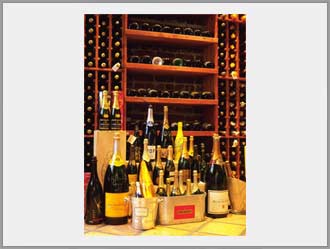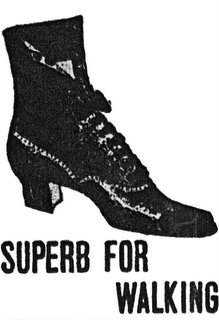If, as they say, God spanked the town for being over frisky,Why did He burn the churches down and save Hotaling's whiskey?In April 1906, fire —and dynamite— took down most of San Francisco from the Mission District to the northern waterfront and from the Bay to Van Ness. A total of 28,000 buildings were lost. A few pockets inside the burned district were saved due to the whimsey of wind and flame, or local heroism. Hotaling's was the savior of this particular pocket, that is now called Jackson Square.

Here's the story: the Army wanted to dynamite the Jackson Street buildings,
including Hotaling’s, to create a firebreak to save the nearby U.S. Appraiser’s Building. However, as the Hotaling’s manager pointed out, a few sticks of dynamite, the woodframe building and the 5,000 barrels of Old Kirk whiskey stored inside would have created rather more firestorm than firebreak. (Some say an exchange of gifts of cash or alcohol may have facilitated the decision.)
The little street named for Hotaling’s started life as Jones Alley. Close to the original waterfront, Jones Alley served the function of an alley: the service entrances to nearby businesses, a place where freight conveyances (carts and wagons), drawn by (manure-producing) horses could wait for pickups and deliveries out of the way of more proper traffic along the more major thoroughfares. For many years in the last decades of the 1800s, I. Landsberger & Co. champagne manufacturers and distributors were open for business at 10 and 12 Jones, right about where the
Bubble Lounge is today.

In 1903, Jones morphed into Jessop. (Perhaps commemorating New York native Andrew Jessop, a manufacturer of spices… more research needed to get the scoop on why the name changed.)
Jessop remained Jessop through the pre-fire boom, the fire itself and the post-fire reconstruction. It remained Jessop through the mighty days of the Barbary Coast, and through the (relative) clamp-down of Prohibition. Then, along about the time that the 18th Amendment (banning the manufacture, transportation and sale of alcohol) was repealed, Jessop Alley became Hotaling St. The timing may have been a coincidence.
(In commemoration of 100 years since Hotaling's heroism, San Francisco's
Anchor Brewing Company has created a new Hotaling's Whiskey.)
(
Map)




